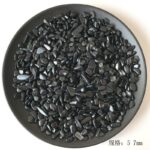Crystal is a broad term that encompasses an array of naturally occurring solid materials with a well-defined crystal structure. From the mesmerizing brilliance of diamonds to the soothing tranquility of rose quartz, the world of crystals has captivated people for centuries. But amidst the allure and symbolism, a fundamental question lingers: is crystal worth anything?

The Value of Crystals
The value of a crystal lies not solely in its physical properties or chemical composition but rather in the myriad ways it can enrich human lives. From adornment to healing practices, crystals have found diverse applications across cultures and civilizations.
Adornment and Luxury
Crystals have adorned royal crowns, exquisite jewelry, and opulent decor for millennia. Their unique optical properties and shimmering beauty have made them coveted objects of desire for those seeking to exude elegance and opulence. The diamond industry alone is valued at a staggering $80 billion annually.
Healing and Well-being
Crystals have long been associated with healing and well-being. Practitioners of crystal therapy believe that crystals can interact with the human body’s energy fields, promoting relaxation, reducing stress, and alleviating physical ailments. While scientific evidence to support these claims is often anecdotal, the placebo effect and the power of belief cannot be discounted.
Spiritual and Metaphysical Beliefs
Crystals hold deep spiritual and metaphysical significance for many. They are often used in meditation and spiritual practices to enhance clarity, connect with higher powers, and promote inner peace. The belief in the energetic properties of crystals has been present in ancient cultures worldwide.
The Many Facets of Crystal Value
The value of a crystal extends beyond its intrinsic properties. Factors such as rarity, perceived beauty, historical significance, and cultural context all contribute to its perceived worth.
Rarity and Availability
The scarcity of a crystal can significantly influence its value. Rare and exotic crystals, such as certain gemstones, command premium prices due to their limited supply. Conversely, common crystals, such as quartz, are more widely available and less valuable.
Aesthetic Appeal
The visual appeal of a crystal plays a crucial role in determining its worth. Crystals with vibrant colors, exceptional clarity, and unique formations are often considered more valuable than those with less striking appearances.
Historical Significance
Crystals with a rich historical provenance can command substantial value. For instance, ancient Egyptian scarabs crafted from lapis lazuli are highly prized by collectors and museums, as they embody the cultural and artistic traditions of a bygone era.
Cultural Context
Different cultures assign varying degrees of value to crystals. For example, jade is highly valued in Chinese culture, where it is considered a symbol of wealth and prosperity. Conversely, in other cultures, jade may be less esteemed.
Practical Applications of Crystals
Beyond their aesthetic and spiritual uses, crystals find practical applications in various industries.
Electronics and Technology
Crystals, such as quartz, are essential components of electronic devices like computers, smartphones, and watches. Their piezoelectric properties allow them to generate electrical current and control the flow of electricity.
Optics and Lighting
Crystals are used in optical lenses, lasers, and fiber optics. Their ability to refract, reflect, and transmit light makes them indispensable in a wide range of optical applications.
Manufacturing and Research
Crystals are utilized in lasers, cutting tools, and other industrial applications. Their hardness, thermal conductivity, and electrical properties lend them versatility in manufacturing and research fields.
How to Determine the Value of a Crystal
Assessing the value of a crystal requires knowledge and expertise. Consider the following factors:
- Type and Origin: The type of crystal, its geological origin, and its rarity impact its value.
- Size and Quality: Larger and high-quality crystals are typically more valuable than smaller or flawed ones.
- Clarity and Color: Crystals with exceptional clarity and vibrant colors command higher prices.
- Cut and Polish: The cut and polish of a crystal can enhance its brilliance and perceived value.
- Certifications and Provenance: Crystals with certifications from reputable organizations and clear provenance documentation are more valuable.
Tips and Tricks for Crystal Collectors
Navigating the world of crystal collecting can be daunting. Here are some tips to help you make informed decisions:
- Do Your Research: Learn about different types of crystals, their properties, and their values.
- Shop from Reputable Sources: Avoid purchasing crystals from dubious sellers or at inflated prices.
- Start with Affordable Pieces: Begin your collection with affordable crystals and gradually acquire more valuable specimens as your knowledge and budget allow.
- Consider Multiple Factors: Don’t solely focus on price. Consider the crystal’s quality, rarity, and significance to you personally.
- Don’t Forget the Experience: Collecting crystals should be an enjoyable and enriching experience. Choose crystals that resonate with you and bring you joy.
Conclusion
Is crystal worth anything? The answer lies in the myriad ways it can enhance our lives, from adornment and healing to spiritual and practical applications. By understanding the complexities of crystal value, collectors and enthusiasts can appreciate the beauty, significance, and potential worth of these captivating natural wonders.




























